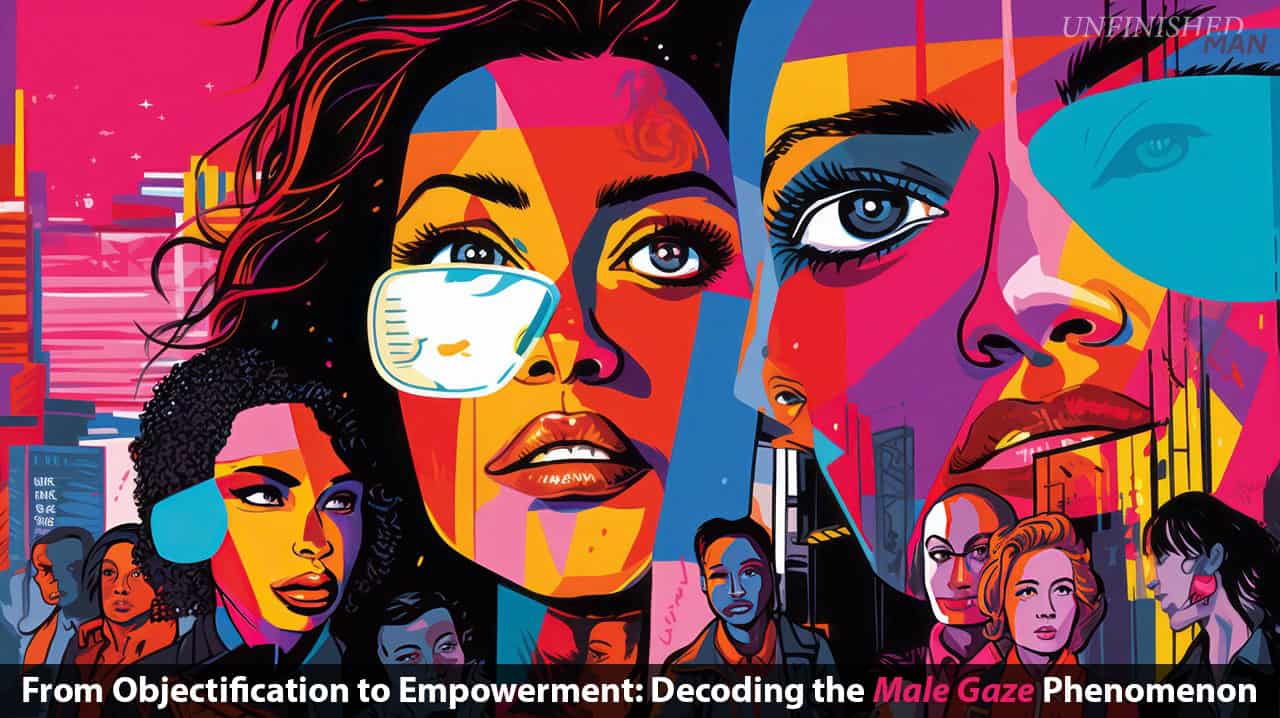Ever wonder how media portrayal of women affects their self-perception and societal roles? I’ve been there, too. The fact is, much of our visual culture still operates through a lens known as the “male gaze,” popularized by feminist film theorist Laura Mulvey in the ’70s.
Today’s article dissects this concept, exploring its origins and far-reaching impacts on female self-esteem while examining ways to challenge it. Ready for a deep dive into the male gazes influence?
Key Takeaways
The male gaze, coined by feminist film theorist Laura Mulvey, refers to the objectification and diminishment of women in media through a heterosexual male lens.
The male gaze has a long history in art, film, and advertising and perpetuates harmful gender stereotypes while limiting female empowerment and self-expression.
Exposure to the male gaze in media can negatively impact women’s self-perception, self-esteem, and mental health, contributing to issues like depression, anxiety disorders, eating disorders, and self-harm tendencies.
Challenging the male gaze is possible by promoting diverse representations of women in media that showcase their talents, intelligence, strength, and achievements rather than solely focusing on appearance or sexual appeal.
Table of Contents
Definition of the Male Gaze
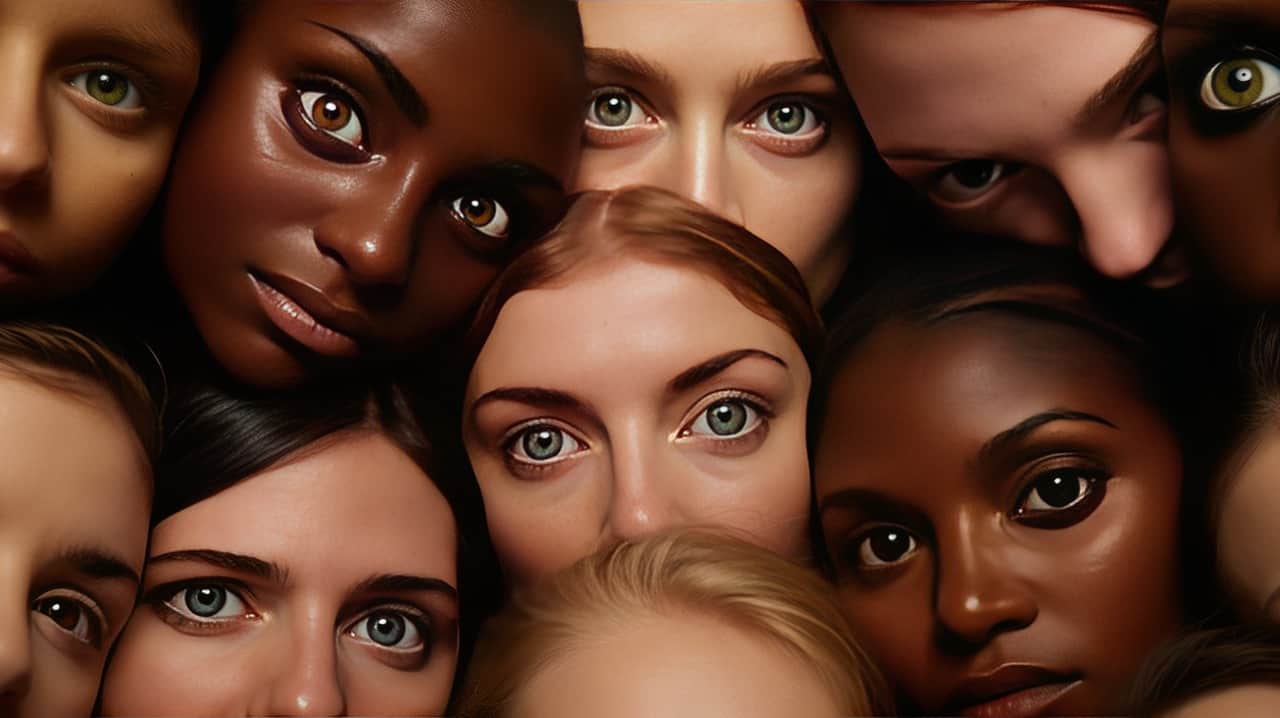
Let’s dive in and break down the concept of the “Male Gaze.” Coined by feminist film theorist Laura Mulvey in her seminal 1973 essay, it refers to a way of looking at women that empowers men while objectifying and diminishing women.
This perspective goes beyond simply viewing women; it stretches into male-dominated societal norms and patriarchal ideologies shaping how we perceive reality around us. Often, this gaze reduces women to passive objects of desire rather than active subjects with their own agency.
And without us being aware, it’s been subtly controlling narratives for years – both on-screen and off – limiting female empowerment and self-advocacy while encouraging self-objectification.
Understanding this term is like wearing glasses that correct skewed vision; once you see through the Male Gaze, you can’t unsee its influence on film history, media representation, depictions of women, and our everyday life.
Origin and History of the Male Gaze
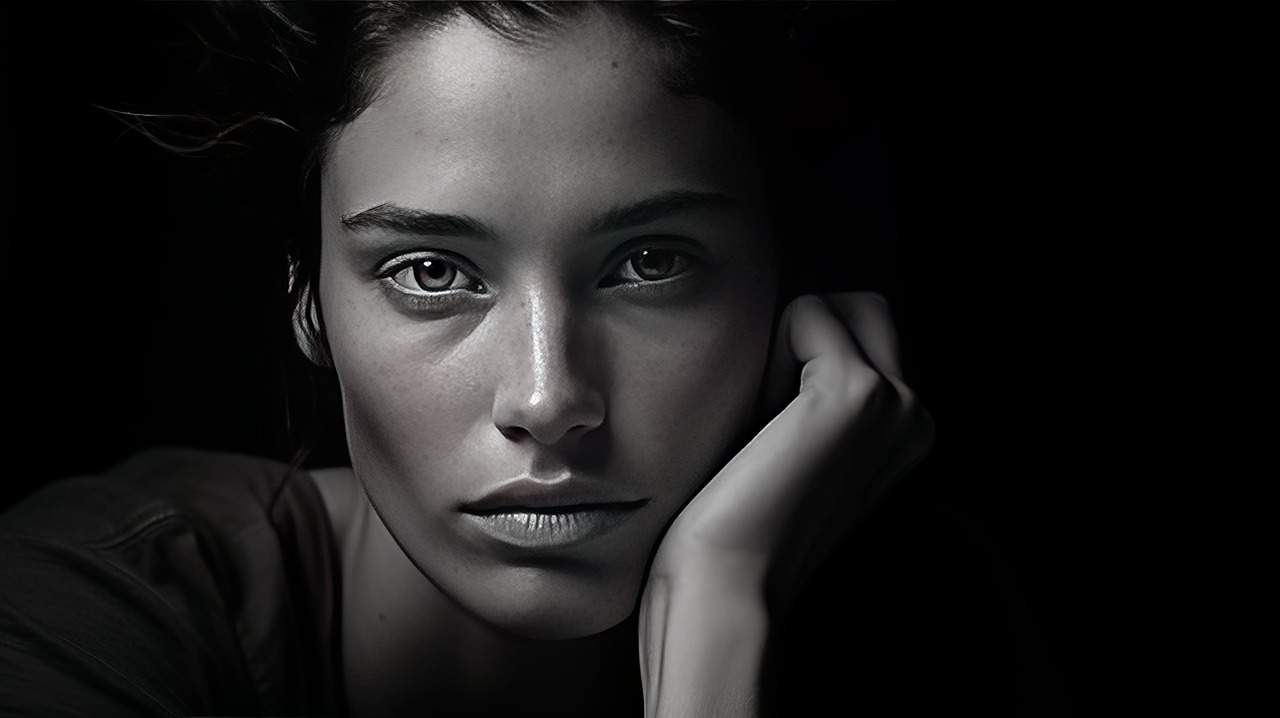
Let’s dive into the birth of this phenomenon. The term “male gaze” surfaced in 1973 from feminist film theorist Laura Mulvey’s essay “Visual Pleasure and Narrative Cinema.” However, its roots trace much further back.
Just think about classical art history laden with paintings depicting passive women viewed through a heterosexual male lens. Even before painting was commonplace, storytelling often presented women as objects seen from a masculine perspective.
As technology evolved and cinema took over as a compelling form of narrative, this ingrained tendency didn’t fade away but instead found a new platform to proliferate.
The silent films era heavily utilized the male gaze – females were portrayed primarily for their physical assets to appeal to the predominantly straight, white male audience. Fast forward to today; we can still spot traces of it in media ranging from advertisements and music videos to TV shows and movies.
So you see that not only has the male gaze been around for quite some time, but it’s also deeply woven into our cultural fabric – sneaking up on us perhaps more often than we’d care to admit or even realize.
It shapes societal norms and expectations while reinforcing patriarchal structures consistently favoring white males’ experiences at the expense of others. Hence understanding its origin becomes crucial if we aspire to create an equitable representation in our society moving forward.
The Male Gaze in Media: An Overview
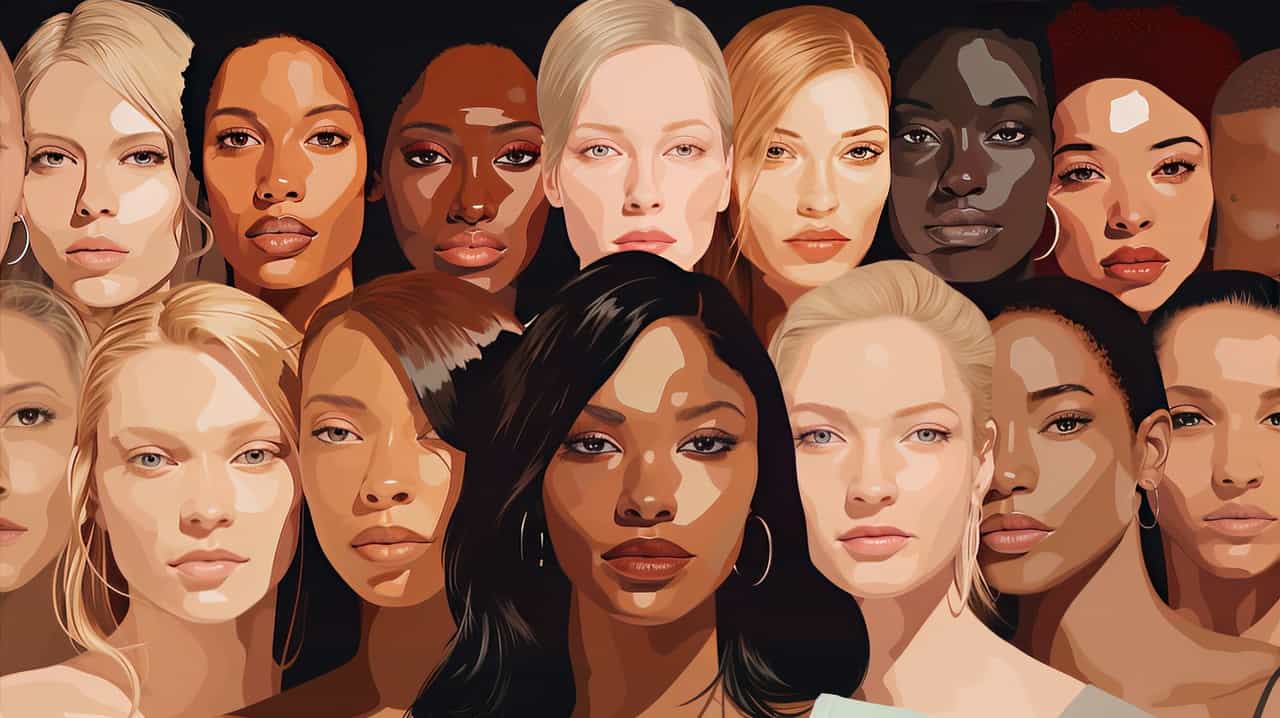
The male gaze can be observed in various forms of media, including film, art, and advertising. It perpetuates the objectification and sexualization of women while marginalizing their agency and perspectives.
To understand its impact fully, explore how the male gaze influences society’s perception of women and contributes to harmful gender stereotypes. Discover why it is crucial to challenge this patriarchal viewpoint and work towards creating a more inclusive media landscape that values female empowerment and self-expression.
To read more about the Male Gaze in Media: click here
Film
Diving into the world of cinema, we notice a recurring trend – the male gaze. This phenomenon dictates how women are portrayed on screen, often reducing them to objects of desire for the heterosexual male audience.
Consider big-budget action movies or even Disney princess narratives such as ‘Beauty and The Beast’ or ‘Cinderella.’ These depictions heavily influence men’s perception of women, fostering unrealistic expectations and endorsing patriarchal ideologies.
Furthermore, it also molds female self-perception and impacts their mental health negatively. It’s time we open our eyes to this implicit bias in storytelling that occurs via film media: promoting an unhealthy societal narrative where men dominate while women become passive recipients in the process.
Art
In the world of art, the male gaze has played a significant role in shaping how women are depicted. Throughout history, many famous works of art have portrayed women through a heterosexual male lens, often showcasing them as objects of desire rather than as individuals with agency and complexity.
Think about classical paintings where nude women were used as phallic symbols or sculptures that placed female bodies on display for the male viewer’s pleasure. These depictions perpetuate patriarchal ideologies and reinforce gender power asymmetry.
It’s important to recognize these implicit assumptions in art and question how they impact our perceptions of women both historically and today.
Advertising
In advertising, the male gaze is often at the forefront, shaping how women are portrayed and perceived. It’s not uncommon to see women in advertisements presented as sexual objects or using their bodies to sell products.
This perpetuates harmful gender stereotypes and reinforces a patriarchal view of femininity. When we’re constantly bombarded with images that objectify women, it can have a significant impact on how we perceive ourselves and others.
Studies have shown that exposure to these types of advertisements can lead to low self-esteem and body dissatisfaction and even contribute to mental health issues like depression and anxiety.
Impact of the Male Gaze
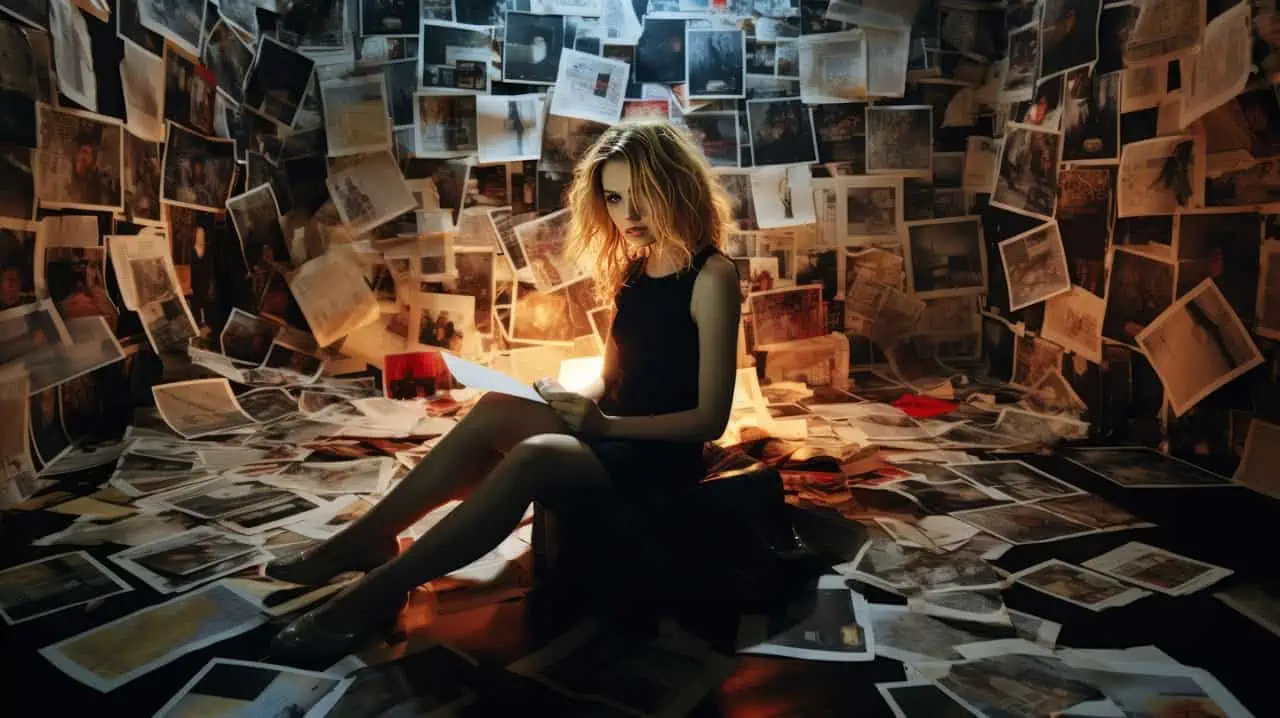
The impact of the male gaze extends beyond media and has deep implications for women’s self-perception, self-esteem, and empowerment. It reinforces patriarchal ideologies that control the narrative, reducing women to passive objects of desire and limiting their agency in society.
This perpetuates gender bias, implicit assumptions about femininity, and the objectification of women, all of which have far-reaching consequences on mental health and contribute to a range of issues such as depression, anxiety disorders, eating disorders, self-harm tendencies, and even suicidal ideation.
On Women
As men, it’s crucial for us to recognize the impact of the male gaze on women. The male gaze reduces women to objects of desire and diminishes their agency in society. It perpetuates sexist and patriarchal views that limit women’s empowerment and self-advocacy.
This means that women are often portrayed as passive, dependent, and solely existing for the pleasure or validation of men. The influence of the male gaze extends beyond media and affects how women perceive themselves and other women.
Studies have shown that exposure to the objectification of women in media can negatively impact female self-esteem, body image, and mental health. Women may internalize unrealistic beauty standards promoted by the male gaze, leading to feelings of inadequacy or worthlessness.
This can contribute to depression, anxiety disorders, eating disorders like anorexia or bulimia, self-harm tendencies, and even suicidal ideation.
It’s important for us as men to challenge this harmful narrative by recognizing our own privileges and role in perpetuating gender inequality. We must actively support diverse representations of women in media that showcase their talents, intelligence, strength, and achievements – rather than solely focusing on their appearance or sexual appeal.
On Society
The impact of the male gaze extends far beyond individual women; it permeates society as a whole. By perpetuating unrealistic and objectifying portrayals of women, the male gaze reinforces harmful gender stereotypes and contributes to systemic inequality.
It creates a culture in which women are constantly judged based on their appearance, leading to feelings of inadequacy and low self-esteem. This not only affects women’s mental health but also limits their opportunities for personal growth and empowerment.
Moreover, the male gaze serves to normalize toxic masculinity by reinforcing patriarchal ideologies that prioritize men’s desires over women’s autonomy. This includes the act of guys staring at women, which objectifies and reduces them to mere objects of desire. It is important for men to recognize the harmful effects of such behavior and actively challenge it. By fostering a culture of respect, consent, and equality, we can create a society where women are seen as multidimensional individuals rather than passive recipients of unwanted attention.
Is the Male Gaze Harmful?
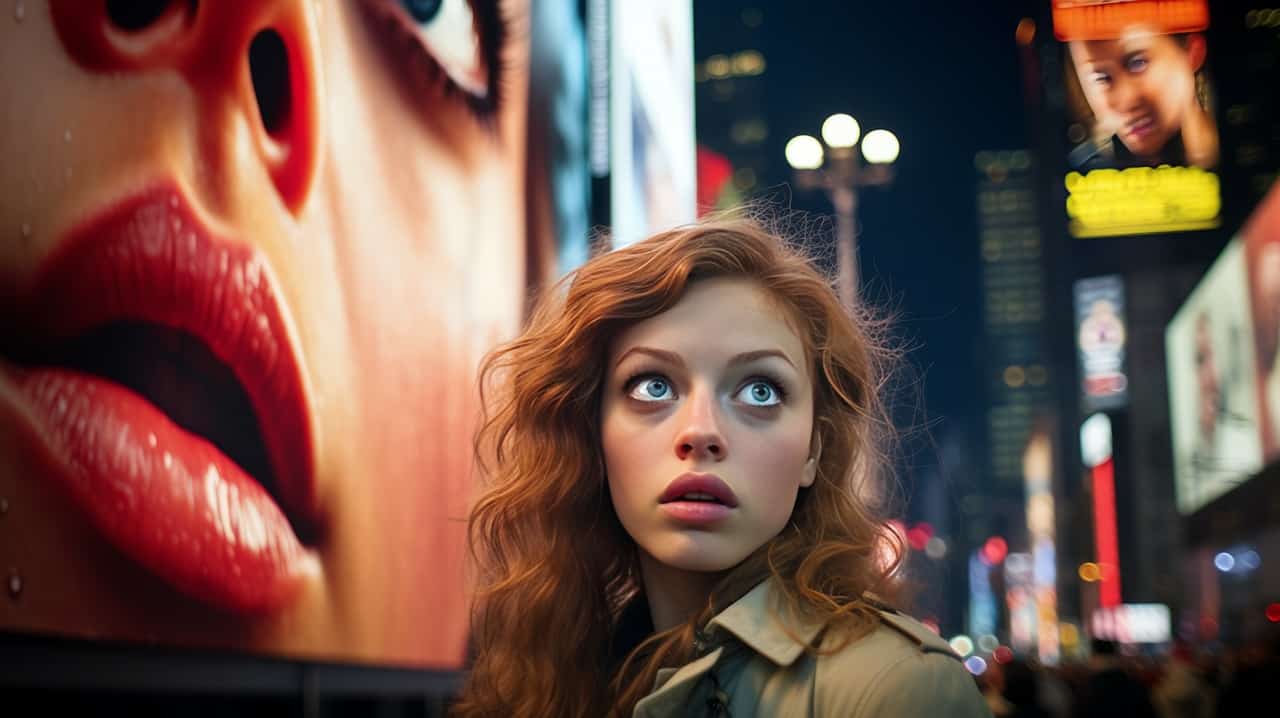
The harmful impact of the male gaze extends beyond media representation, affecting the mental health and self-esteem of women, perpetuating stereotypes, and reinforcing patriarchal power dynamics.
Mental Health Impacts
The male gaze doesn’t just affect women on the surface level; it also has serious mental health impacts. Constant exposure to media that objectifies and sexualizes women can contribute to depression, anxiety, low self-esteem, eating disorders, self-harm, and even suicidal thoughts.
Studies have shown that the more women are exposed to images of idealized female bodies in media, the worse they feel about themselves. This unrealistic standard perpetuated by the male gaze can leave many women feeling inadequate and constantly striving for unattainable beauty ideals.
It’s important for men to recognize the harmful effects of the male gaze on women’s mental well-being and actively work towards challenging these stereotypes and promoting healthy body image and self-esteem for all individuals.
Perpetuation of Stereotypes
As a man, it’s important to recognize how the male gaze perpetuates harmful stereotypes about women in media. The male gaze reduces women to narrow, one-dimensional roles that reinforce societal expectations and biases.
By portraying women primarily as objects of desire and passive recipients of the male gaze, the media perpetuates harmful stereotypes about femininity and limits the representation of diverse female experiences.
This not only restricts the potential for authentic storytelling but also reinforces gender hierarchies and stifles opportunities for true equality. It’s crucial for us to challenge these stereotypes and support more inclusive portrayals of women in media that reflect their complexity, agency, and diversity.
Changing the Male Gaze: Is it Possible?
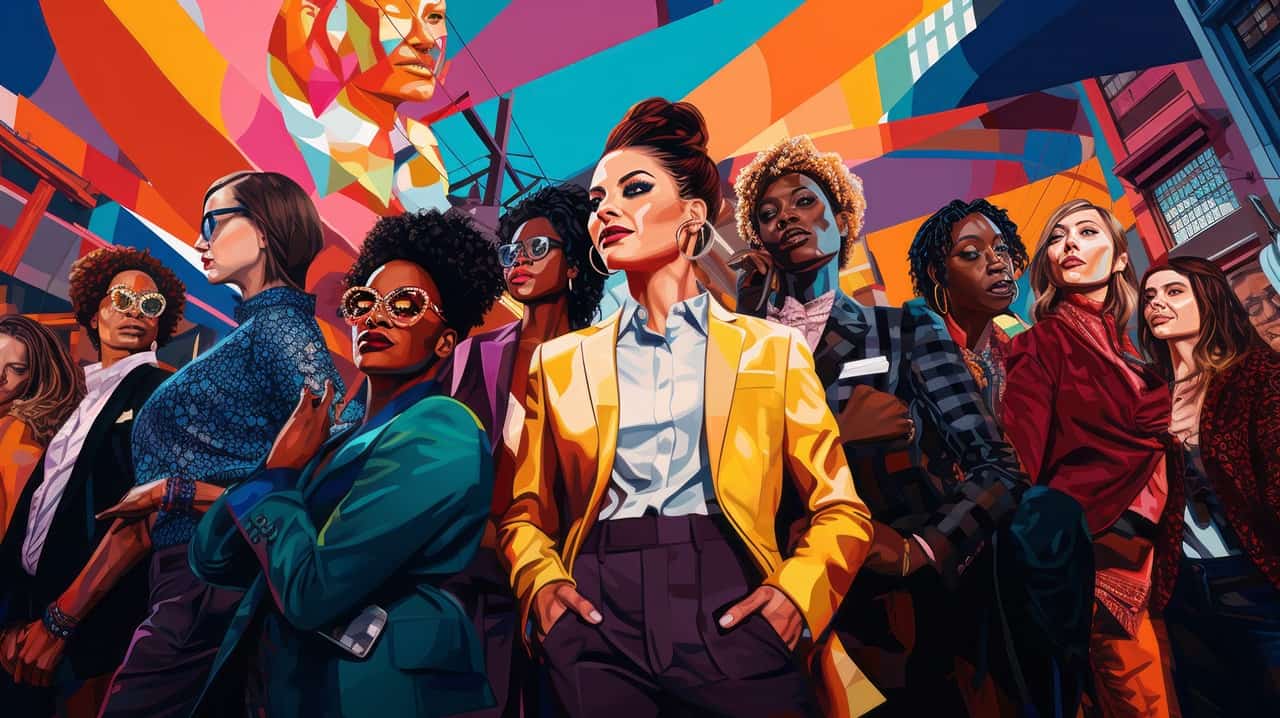
Changing the male gaze is not only possible but essential for creating a more inclusive and equitable society.
Positive Examples of Change
I want to share some positive examples of change when it comes to challenging the male gaze in media. These examples show how we can break free from limiting stereotypes and empower women to take control of their own narratives:
- The rise of female directors: More women are stepping behind the camera and telling their own stories, bringing a fresh perspective to filmmaking. Directors like Ava DuVernay, Greta Gerwig, and Patty Jenkins are creating inclusive and empowering narratives that challenge traditional gender roles.
- Diverse representation: There is a growing demand for diverse representations of women in media. We are seeing more complex and realistic portrayals of women from different backgrounds, races, body types, and sexual orientations. This allows for a broader range of identities and experiences to be celebrated and normalized.
- Body positivity movement: The body positivity movement is gaining momentum, encouraging women to embrace their bodies as they are rather than conforming to unrealistic beauty standards. Brands like Dove have launched campaigns promoting body acceptance and self-love, challenging the objectification of women’s bodies.
- Intersectional feminism: Women are coming together across different social identities to fight against patriarchal norms and address various forms of oppression. Intersectional feminism recognizes that race, sexuality, class, ability, and other factors intersect with gender to shape individual experiences. This inclusive approach ensures that all voices are heard.
- Social media activism: Platforms like Instagram and Twitter have become powerful tools for feminist activism. Hashtags such as #MeToo and #TimesUp have sparked conversations about consent, harassment, and gender equality on a global scale.
- Male allies: Men who actively support gender equality play a crucial role in challenging the male gaze. By examining their own biases and amplifying marginalized voices, they help create a more inclusive society where everyone can thrive.
- Reimagining iconic characters: Traditional portrayals of female characters in media are being reimagined to break free from the male gaze. For example, in the rebooted “Wonder Woman” film, the title character is depicted as a strong and independent warrior rather than just a sexualized object of desire.
- Empowering female-led storylines: More stories are being told that center around women’s experiences and perspectives. TV shows like “Killing Eve,” “Big Little Lies,” and “Jessica Jones” feature complex female characters who navigate their lives with agency and strength.
Strategies for Change
As men, it’s crucial for us to acknowledge the harmful impact of the male gaze and take action to change it. Here are some strategies we can adopt:
- Educate ourselves: Take the time to learn about the concept of the male gaze and how it influences women in media and society. By educating ourselves, we can better understand the negative effects and work towards dismantling it.
- Challenge our own biases: Reflect on our own perceptions of women and question any objectifying or stereotypical thoughts that arise. Recognize that women are multidimensional individuals deserving of respect and agency.
- Support diverse representation: Seek out media that portrays women in empowering and diverse ways. Support movies, TV shows, and other forms of media that challenge traditional gender roles and present women as strong, independent characters.
- Listen to women’s voices: Amplify the voices of women by actively seeking out their perspectives in discussions about media representation. Encourage open dialogue with female friends, colleagues, and family members to gain insights into their experiences.
- Promote body positivity: Encourage positive body image by appreciating the diversity of bodies and rejecting unrealistic beauty standards imposed by society. Celebrate all body types and challenge others when they engage in body-shaming behaviors or language.
- Engage in feminist activism: Support organizations working towards gender equality and intersectional feminism. Get involved in campaigns addressing issues such as sexual harassment, equal pay, reproductive rights, and combating violence against women.
- Be an ally: Stand up against sexism when you witness it happening – whether it’s in everyday situations or online spaces. Challenge derogatory comments or objectifying behavior towards women by speaking out against them.
- Empower young boys: Teach young boys about consent, healthy relationships, empathy, and respect for all genders from an early age. Foster an environment where they can grow up without perpetuating harmful gender stereotypes.
- Support inclusive and diverse workplaces: Advocate for gender diversity in the workplace and push for policies that combat discrimination and promote equal opportunities for all employees, regardless of their gender.
- Reflect on our own behavior: Constantly examine how our own actions and words may contribute to the perpetuation of the male gaze. Question whether our interactions with women are based on respect, equality, and consent.
The Female Gaze: A Counterpoint
The Female Gaze provides a counterpoint to the Male Gaze, highlighting the importance of women’s perspectives and desires in media representation.
Definition
The male gaze refers to the way in which women are depicted and seen from a heterosexual male perspective. It is a concept that focuses on how women are objectified, sexualized, and portrayed as passive objects of desire in various forms of media, such as film, art, and advertising.
This term was popularized by feminist film theorist Laura Mulvey in 1973 when she wrote about the visual pleasure experienced by men while passively looking at women onscreen. The male gaze extends beyond just watching movies; it influences how women perceive themselves and impact their self-esteem.
It perpetuates sexist views and contributes to harmful societal norms that limit female empowerment and self-advocacy.
Examples in Media
I’ve come across several examples in media that perfectly illustrate the concept of the male gaze. Here are some noteworthy ones:
- In the film industry, movies like “Transformers” directed by Michael Bay, often utilize the male gaze to portray female characters as objects of desire rather than fully-developed individuals with agency.
- Another film, “Spring Breakers,” directed by Harmony Korine, showcases how the male gaze can hypersexualize young women, reinforcing patriarchal ideologies and perpetuating objectification.
- Disney princess movies like “Beauty and the Beast,” “Aladdin,” Sleeping Beauty,” and “Cinderella” also contribute to promoting unrealistic beauty standards for women. These films often depict passive, doe-eyed female characters who are waiting to be rescued by a prince or validate their worth through external validation.
Criticisms of the Male Gaze Theory
I understand that some men may have reservations or criticisms about the concept of the male gaze theory. It’s important to note that while the theory has gained wide recognition in feminist film criticism, it is not without its critics and debates.
One common criticism is that the theory oversimplifies complex issues surrounding gender representation in media.
Some argue that reducing all portrayals of women in media to simply being objects of desire ignores the agency and complexity of female characters. They believe that women can be portrayed as sexual beings without necessarily being objectified or degraded.
Others contend that focusing solely on how men look at women overlooks other power dynamics and forms of oppression present in society.
Critics also question whether the male gaze applies universally across cultures and contexts, arguing for a more intersectional approach to understanding gender representation. There are suggestions for expanding the conversation beyond heterosexual male viewership and considering different perspectives like the female gaze or LGBTQ+ experiences.
While acknowledging these criticisms is essential to fostering a well-rounded dialogue, it’s crucial to recognize how pervasive patriarchal ideologies shape our perceptions of gender roles and drive inequality within society.
Engaging with these discussions allows us as individuals to challenge societal norms and contribute towards building more inclusive media representations.
So, as we explore this topic further, I encourage you to keep an open mind and consider multiple viewpoints to develop a nuanced understanding of how media influences our perception of women.
Frequently Asked Questions About the Male Gaze
What is the concept of the male gaze and its impact on women in media?
The concept of the male gaze refers to how media, predominantly created by men, often objectifies and presents women from a heterosexual male perspective. This can lead to negative effects such as unrealistic beauty standards, limited representation, and perpetuation of sexist stereotypes.
How does the male gaze affect female representation in media?
The male gaze affects female representation in media by prioritizing sexualized and stereotypical portrayals of women over authentic and diverse representations. This can reinforce harmful gender norms and limit opportunities for women to be seen as complex individuals with their own agency.
Can the male gaze be avoided or challenged in media production?
Yes, it is possible to challenge and avoid the male gaze in media production. By diversifying perspectives behind-the-scenes (such as having more female directors or writers), consciously subverting traditional gender roles, providing more nuanced narratives for female characters, and promoting inclusive casting decisions, creators can help dismantle the dominance of the male gaze.
What are some potential consequences of challenging the male gaze in media?
Challenging the male gaze in media may lead to increased representation for marginalized groups, greater inclusion of diverse voices and experiences, reduced objectification of women’s bodies, improved body image perceptions among viewers, and ultimately a more equitable industry that empowers all individuals regardless of gender identity or sexuality.
Conclusion
In conclusion, understanding the male gaze and its impact on women and media is crucial in dismantling harmful patriarchal ideologies and creating a more equitable society. By recognizing the ways in which the male gaze objectifies and diminishes women, we can work towards challenging these norms, promoting female empowerment, and fostering healthier self-perceptions for all genders.
It’s time to shift our perspective and embrace a more inclusive and diverse representation in media that respects the agency and autonomy of women. Together, we can change the narrative.
